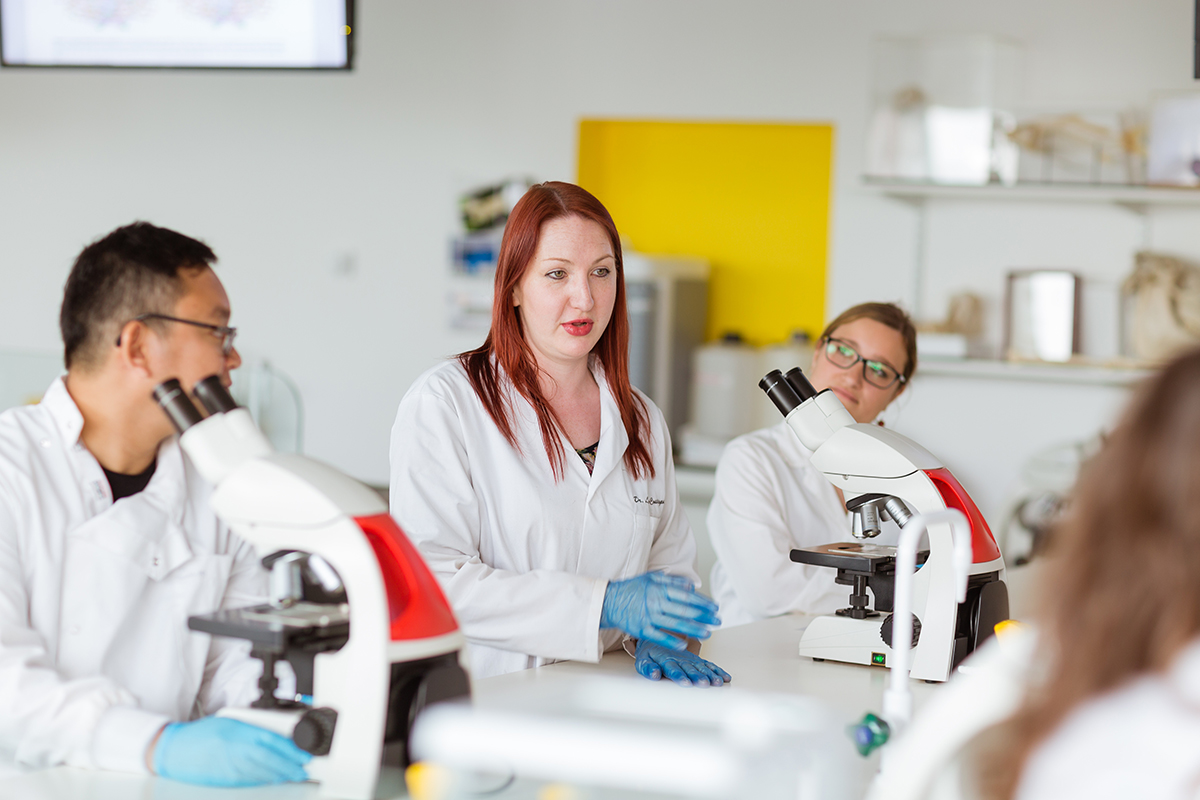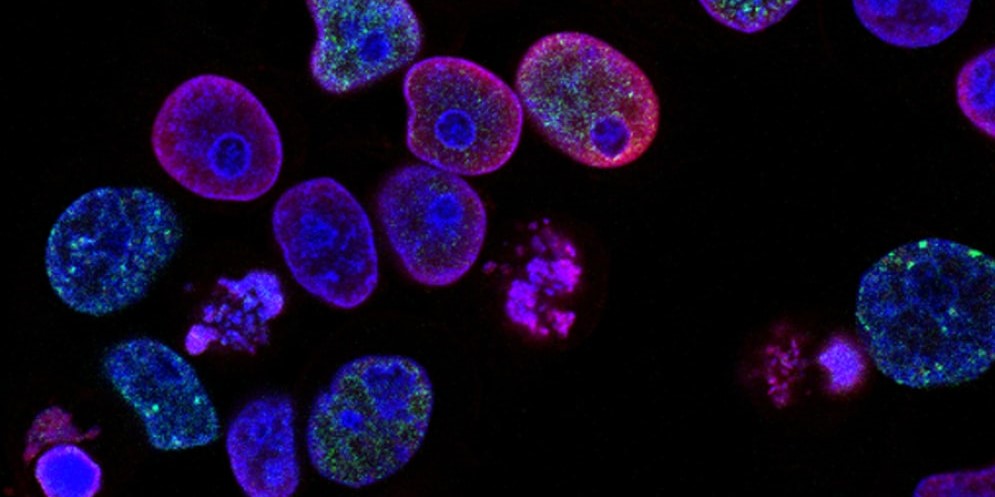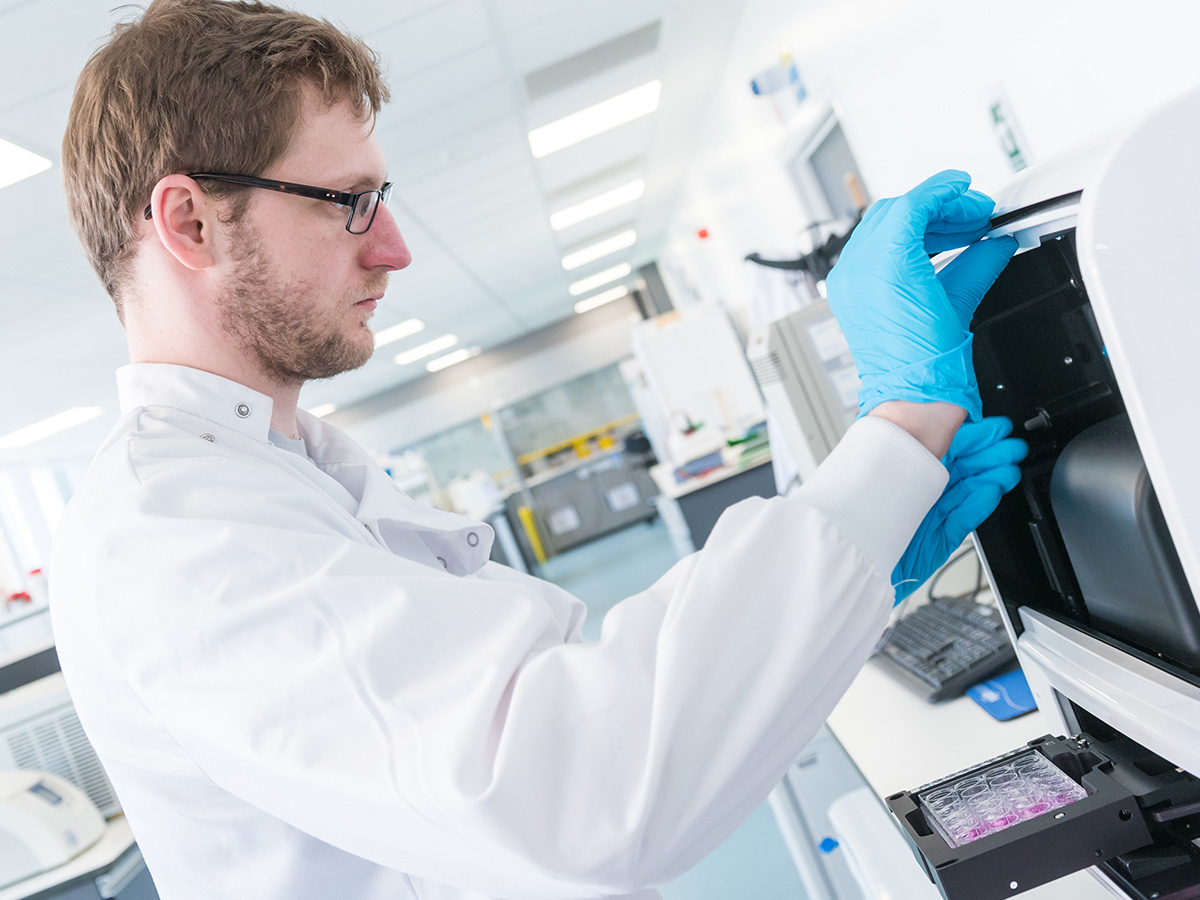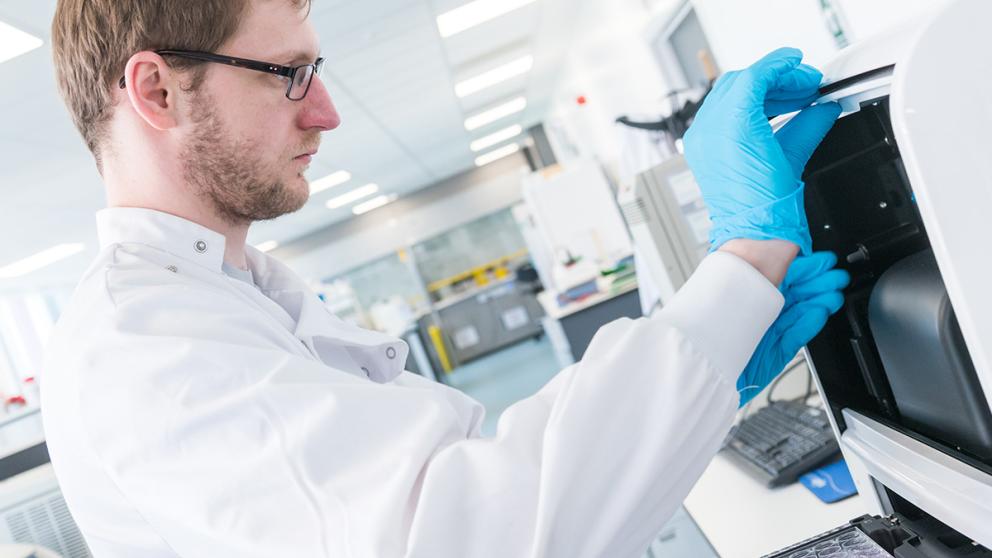Biomedical Research and Innovation Centre
The Biomedical Research and Innovation Centre (BRIC) brings together a vibrant and collaborative community of scientists to address critical challenges faced by society. Our research spans fundamental and applied aspects of bioscience research across a number of broad themes. We aim to deliver world-class, interdisciplinary research which benefits people’s lives.
BRIC works closely with commercial, academic, and healthcare partners across local, national, and international regions, including Europe, Asia, Africa and other parts of the world. We welcome new partners to join us.
We value and support research, which is collegiate and ambitious, as well as the delivery of world-leading outputs and impact. This is based upon quality not quantity, in line with our adoption of DORA. BRIC strives to create an environment where all researchers feel valued, can contribute and participate. Together, we will support and intentionally include people from diverse backgrounds and identities to achieve their research ambitions.
Most researchers make contributions to a number of research areas within the centre. Researchers also work closely with colleagues in the Environmental Research and Innovation Centre as well as the wider university, and as part of national and international collaborations.
We have a growing community of Post Graduate Researchers working under the supervision of our colleagues.
Microbial Communities
Our diverse expertise spans the spectrum from characterising biological mechanisms and population dynamics of individual microbial species, to unpicking the complexities of microbiome communities and their interactions with humans, animals, and the environment. Our researchers work closely with ERIC, as well as the wider university, and as part of national and international collaborations.
Through our research we will better understand and tackle key themes such as antimicrobial resistance, climate change and infectious disease transmission, host-pathogen interactions, and bacteriophages. We are working collaboratively with others to develop microbial biotechnology applications in health and industry, including the food industry.
Funding: Research is supported by, amongst others, BBSRC, NERC, Knowledge for Change, Gates Foundation.
Collaborators: We collaborate nationally and internationally, including with Kenyan Medical Research Institute (KEMRI), Antimalarial Campaign Kenya, Center for Drug Research India, Makerere University, Uganda. The University of Liverpool, Liverpool School of Tropical Medicine.
Cardiovascular-respiratory Research

Our members share a common goal; to undertake highly translational laboratory-based cardiovascular and respiratory research.
Revealing detailed patho-physiological mechanisms at cell / tissue level underpins the group’s main agendas:
- Advance understanding of the fundamental physiology of the cardiovascular and respiratory systems
- Discover novel therapeutic targets to prevent or treat disease
Research is supported by a number of organisations including British Lung foundation, British Heart Foundation, Kidscan, collaboration with Blackpool Foundation Trust, Manchester Foundation Trust, Royal Manchester Children's Hospital and Northern Care Alliance.
Novel Therapies and Diagnostic Tools

This group brings together researchers who apply their expertise in drug discovery and repurposing, and diagnostic tools, to a diverse range of diseases. Chemists, biologists and modellers work collaboratively (and across subareas) to identify diagnostic biomarkers, as well as repositioning, repurposing, and designing therapies. We have published work in several areas including trauma, infectious diseases, cancer, dementia, and cardiovascular disease.
We collaborate with a number of organisations including Protein Technologies Ltd (Manchester Science Park), GSK Tres Cantos, Madrid Spain, Aspen Pharmacare Ltd, Durban, South Africa, Central Manchester Foundation Trust and the Salford Royal Foundation Trust.
Cancer Disease, Diagnostics and Therapies

This ‘bench-to-bedside’ area works from cells to clinical trials to improve the diagnosis and management of a broad range of human cancers. Our multi-disciplinarity allows our researchers to work collaboratively on a major global health challenge.
This area of research is supported by the Fox Point foundation and Lunella Biotech spin-out pharma company, co-founded by Sotgia and Lisanti to develop new therapeutic strategies for cancer. Our research is underpinned by national and international collaboration, including Vietnam, Thailand, Italy and the USA. We work with clinical partners across the Northwest, such as Blackpool Victoria Teaching Hospital, Royal Manchester Children's Hospital and Wythenshawe Hospital (part of the Manchester Foundation Trust).
Ageing and Dementia

This group’s focus is on finding innovative diagnostics and innovations to address the challenges of ageing and dementia. Identifying biomarkers, understanding pathophysiological changes, developing experimental models and discovering new therapies underpin research interests of our researchers.
Research is supported by Alzheimer's Research UK and Alzheimer’s society.
This area of research also focuses on science communication, bioethics, digital media, eSport and drones.
Our latest projects
Facilities
We have invested in facilities and infrastructure to support our wide areas of biomedical research spanning pharmaceutical science, human physiology, infectious diseases research, clinical and molecular genetics, medical biochemistry and clinical immunology.
Our translational medicine (TM) laboratory and research corridor are home to dedicated facilities for tissue culture, microbiology, molecular biology and biochemistry.
Facilities
Imaging
- Atomic force microscopy
- Scanning electron microscopy
- Transmission electron microscopy
- Laser scanning confocal microscopy
- Fluorescence microscopy (including under culture)
- Light microscopy
- High resolution micro computed tomography
- Immunological analysis
- Sample processing/sectioning for all relevant methodologies
Genomic Sequencing Facility
- HiSeq 3000: This machine can generate >1000 Gb of data per run and is also suitable for a wide range of sequencing application.
- NextSeq: This machine can sequence >400 million inserts per run and is also suitable for a wide range of sequencing application.
- MiSeq: With a run time of as little as 24 hours, this machine can generate up to 5.1 Gb of data when performing a 150-bp paired reads run.
- PacBio Sequel: The PacBio is able to sequence a wide range of templates to generate high quality reads approximately 3,000 bp in length
- ONT Minion: The Minion can routinely generate read sequence tens and even hundreds of kilo-bases in length. While the base calling quality is low, the read length is ideal for the detection of structural variants and de novo assemble
Microbiology
- Constant depth film fermentor
- Anaerobic culture
- Chemostats
- Bacterial proteomics
- Biofilms
- Environmental regulation of gene expression
- Antimicrobial and wound healing peptides
- Methods of sterilisation/disinfection
- Photodynamic therapy
Functional Cell Biology
- 2 x rigs for single cell simultaneous patch clamping, photometry and contractility assessment. Includes temp-controlled fluidics
- Confocal with temp controlled fluidics
- Cell isolation (from tissue) rig
- Dedicated iPSC culture facility
- General cell culture
- Wire myograph
Biochemistry
- FLPC chromatography
- Proteomics (1D/2D PAGE, western blotting, gel documentation and analysis)
- Preparative electrophoresis
- ELISA; UV/fluorescence/luminescence/visible light micro plate analysis
- Freeze drying
- Inorganic analysis (colorimetric and ion selective electrodes)
- Surface plasmon resonance (Biacore)
- Gene expression (including quantitative PCR)
- Recombinant DNA technology
- Quartz Crystal Microbalance (QCM)
The Bodmer Laboratory
Research infrastructure in the Centre was developed through multi-million pounds of investment resulting in creation of the Bodmer laboratory and translation medicine (TM) laboratories, teaching and research facilities for the School of Science, Engineering and Environment.
This environment can support wide areas of biomedical research spanning pharmaceutical science, human physiology, infectious diseases research, clinical and molecular genetics, medical biochemistry and clinical immunology.
Supported by research technicians, we train our research students to use modern, leading-edge laboratory equipment:
- The TM laboratory includes state-of-the-art equipment capable of making detailed physiological recordings from isolated heart cells, unique instrument for nanoscale characterization - CPS Disk Centrifuge DC2400 UHR, cancer metabolism suit including monitoring metabolic-flux and mitochondrial function, cancer stem cell specific cell sorting, and advanced imaging analysis.
- We have access to specialist equipment including a genomics facility complete with an Illumina MiSeq and MinION Nanopore sequencing capacity, NMR, mass spectrometry, FACS. We are also equipped with molecular biology, biochemistry type of facilities including cell culture, qRT-PCR machines and Bioraptor.
- Expertise and facilities are in place to support microbiology and parasitology based research. Immunohistochemistry suit and tissue processing is already in place supporting collaboration with hospitals.
Biomedical Research and Innovation Centre (BRIC)

Explore our Biomedical Research and Innovation Centre (BRIC) website to find out more about our recent projects.

